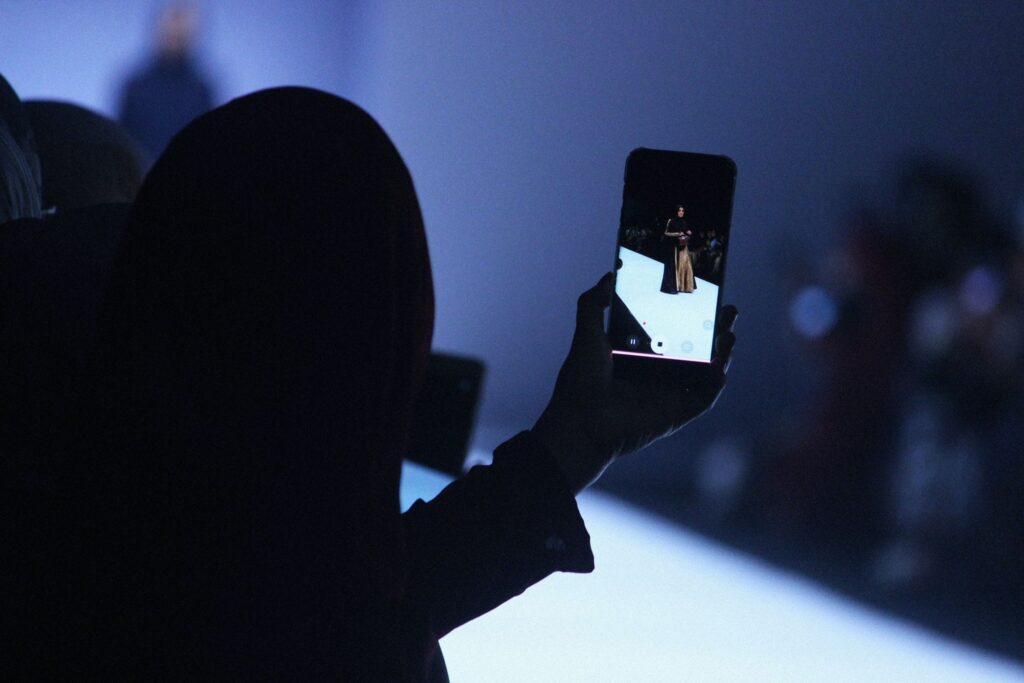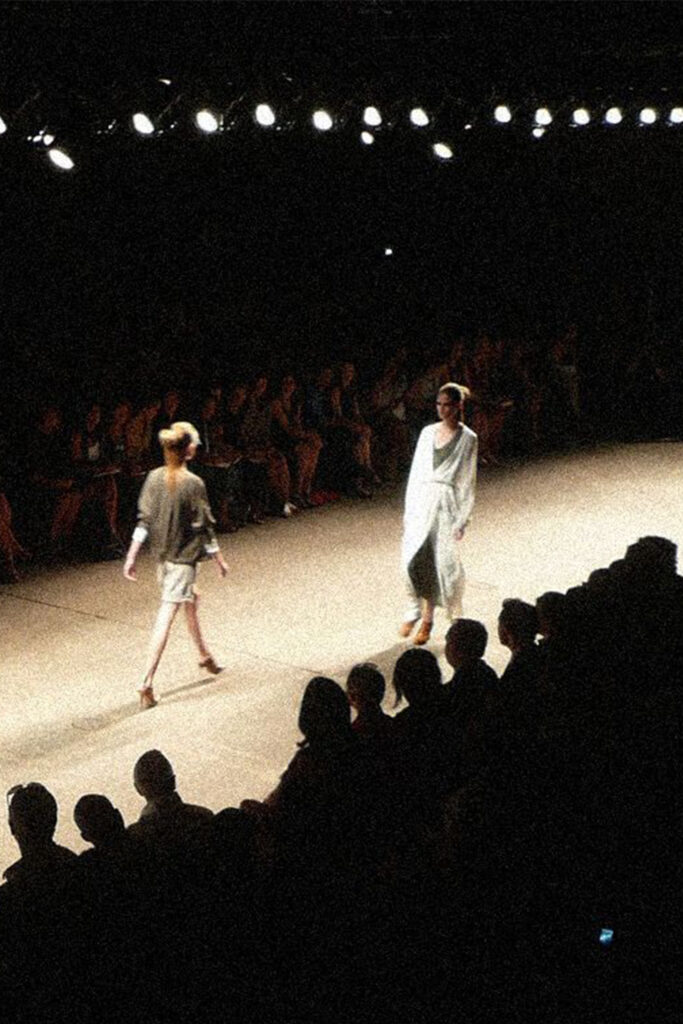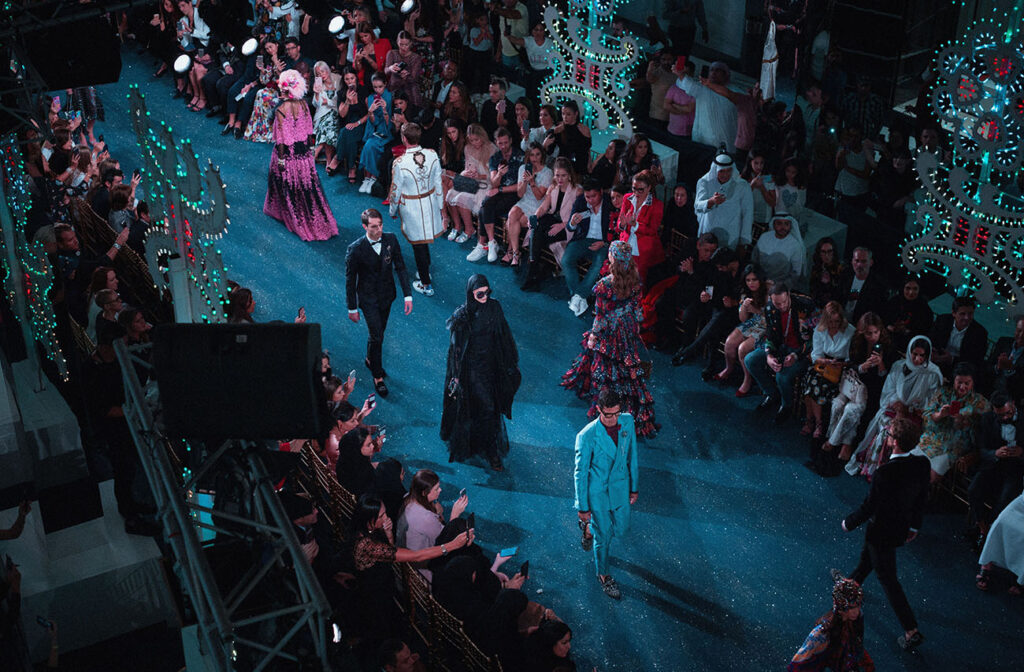Solely glamourizing the industry contributes to neglecting the environmental and labor costs of fashion and fashion shows. People gather from around the globe to analyze new fashion trends and styles, but less attention is paid to the challenges that the industry is facing.
Casey ChanFashion Week: Beyond the Superficial Approach | Casey Chan

Fashion Weeks have proliferated so much, and not just in fashion capitals, that it is now possible to attend them all year. This is not hyperbole. Only two months of the year are free of fashion weeks, and it appears that no continent is free of these events.
With numerous fashion weeks and stunning fashion moments, the focus on style and statement has become obsessive. Social media has contributed significantly to the shift in the meaning of fashion shows. “It’s as much of a people-watching, celeb-spotting event as it is about seeing the clothing in itself,” says one attendee of a fashion show (via Fashionista). The halo of celebrity now overshadows fashion.
The sole purpose for brands to include celebrities in their shows is to help build new relationships with the brand and attract new customers who are attracted by the celebrities. However, it shifted to giving attention to what the celebrities are doing, saying, watching, and wearing instead of giving credit and admiration to the designer, design, and craftsmanship.
Stylists, models, editors, and other fashion industry workers believe that influencers and random celebrities are replacing them. Solely glamourizing the industry contributes to neglecting the environmental and labor costs of fashion and fashion shows. People gather from around the globe to analyze new fashion trends and styles, but less attention is paid to the challenges that the industry is facing.


The number of fashion week attendees is growing along with the number of people who travel to attend fashion shows, further contributing to carbon emissions. Fashion shows are not environmentally or human-friendly.
Travel and transportation contribute 241,000 metric tons of CO2 emissions per year across four women’s wear and two men’s wear seasons. “Which is equivalent to a small country’s annual emissions or enough energy to light up Times Square for 58 years”
Fashionista
An Australian editor stated that there are too many people attending the shows who do not need to be there, resulting in excessive waste and unsustainable environmental damage. Furthermore, 60 to 75 million people worldwide are employed in the textile, clothing, and footwear sector (via Clean Clothes Campaign, 2014) in all parts of the supply chain, from farmers to factory workers. Fashion Revolution USA emphasizes the importance of transparency in order to ensure factory and brand accountability. “The global fashion industry is one of the most significant contributors to modern slavery.”

Fashion has an impact on our mental health. Cuts, colors, and patterns have been shown to improve our mood. One of the reasons is that clothes are associated with specific roles. Routine dressing rituals have also been shown in studies to help people avoid thoughts that lead to anxiety and depression. Furthermore, fashion can influence how we think. For example, professional attire has been shown to improve abstract thinking. Certain colors have also been shown to help with mental health issues. Blue is an antidepressant color, while green has been shown to reduce anxiety (via Fashion United). On the contrary, Fashion week, for many, creates an environment that breeds insecurity. The cost and pressure to “keep up” is having an impact on people’s health.
At fashion week, people can easily feel worthless.
Highsnobiety spoke with several fashion industry figures about how fashion week affects their mental health. Em Odesser, the chief editor of Teen Eye magazine, stated that even though he considers himself to be very confident, his self-esteem suffers during fashion weeks. Last season, he had a panic attack the night before his first show and had to miss a few shows to attend therapy. Fashion week heightens the intensity of FOMO (fear of missing out), about missing one or two shows and not keeping up with street style, which adds another layer of stress and pressure to those involved in any way.


Researchers from Northwestern University in the United States discovered in 2012 that wearing certain articles of clothing affected the wearer’s psychology and performance. The researchers concluded that clothing has symbolic meaning. When we wear clothing with a specific meaning, it can affect our psychological state. It’s known as “enclothed cognition.” However, the fast-paced nature of the fashion industry does not allow much space for meaningful clothing, and we are constantly stimulated by new fashion trends, making it hard to think of clothes as long-lasting products.
It’s a systemic issue. There are mental health issues in every aspect of the fashion industry, but the pressures faced by designers receive the most attention, contributing to a rather hegemonic view of how fashion affects mental health. These issues, however, are far more widespread and multifaceted. There are anxious interns and models with eating disorders in the fashion media. On the production side, there are garment workers who have PTSD as a result of unsafe working conditions. Many fashion schools have students who are depressed or exhausted, as well as instructors who are stretched thin and in constant states of panic due to the precarity of their jobs. These are just a few examples of workers exploited by the fashion industry—a system that thrives on telling people they’ll never be good enough, while social media exacerbates consumer insecurities and encourages more consumerism. On top of that, BIPOC and differently-abled people face additional challenges in order to have their voices heard and be included in the industry, resulting in mental burdens that require far more attention. Nonetheless, fashion is meant to make us happy. This notion is reinforced by media and marketing messages that promise us a better life if we purchase the right dress, bag or lipstick. While much of the world was in an unprecedented state of lockdown in November 2020, a BBC article suggested that dressing up at home could make us happy, echoing a popular belief that our clothing choices can bring us joy. However, the goal has shifted from feeling good to only looking good (via Fashion Studied Journal).

Fashion and society are inextricably linked in every way. Both have come a long way since their humble beginnings. Fashion weeks must be restructured to create a safe community for artists and designers to express their creativity, share their stories, and promote responsible manufacturing.
Fashion week can also provide the space to discuss the contemporary and ‘real’ issues of the industry.
Furthermore, holding fashion shows in fewer but more central locations and reducing the number of shows would significantly reduce the amount of carbon emissions cost by transportation. Instead of having major shows four times a year, such as spring/summer, fall/winter, pre-fall, and resort. It could be reduced to only spring/summer and fall/winter seasons, biannually. More and more people are becoming aware of the environmental and labor costs associated with hosting the shows and hence are reevaluating the purpose of fashion week. Rethinking Fashion Weeks is just the beginning of long-term changes for sustainable initiatives; we must continue to ask how we can reconcile our environmental footprint and health while also advancing our goals as creators.
Words by Casey Chan @KixCasey.




